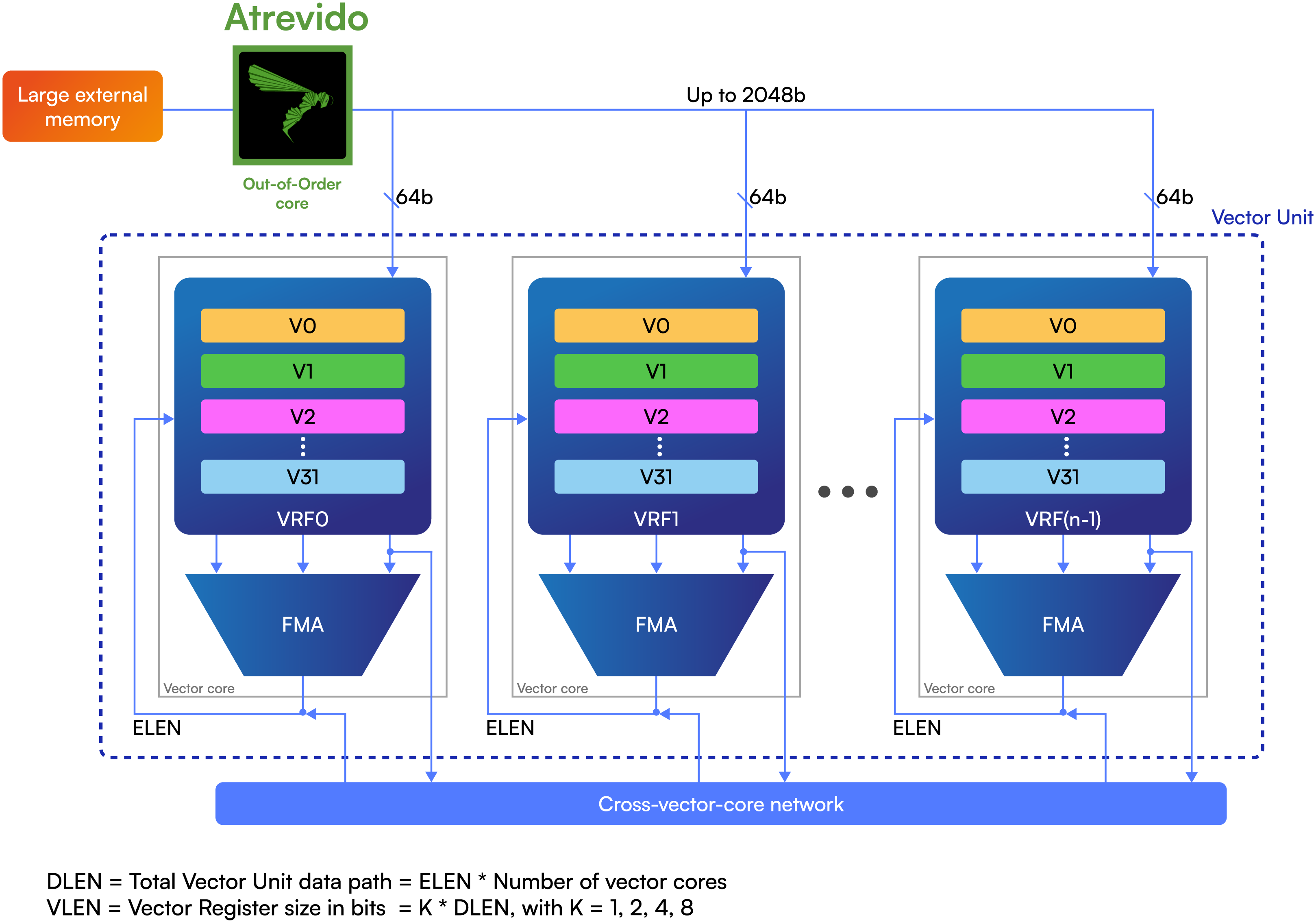
Semidynamics has introduced one of the industry's first RISC-V vector units that could be used for highly parallel processors, such as those used for artificial intelligence (AI), high-performance computing (HPC), and even graphics processing if equipped with appropriate special-purpose IP. The announcement marks an important milestone in the development of the RISC-V ecosystem.
Semidynamics' vector unit is fully compatible with the RISC-V Vector Specification 1.0 and offers a plethora of additional, adaptable features that enhance its data processing capabilities. The VU is made up of several 'vector cores', which are comparable to GPU cores from AMD, Intel, and Nvidia, and are designed to execute multiple computations simultaneously. Each vector core is equipped with arithmetic units that can perform operations such as addition, subtraction, fused multiply-add, division, square root, and logical operations.
The vector core developed by Semidynamics can be customized to support various data types, including FP64, FP32, FP16, BF16, INT64, INT32, INT16, or INT8, depending on the specific needs of the customer's application. Customers can also choose the number of vector cores to be incorporated into the Vector Unit, with options of 4, 8, 16, or 32 cores, providing a broad spectrum of power and performance-area trade-off possibilities.

Semidynamics' Vector Unit features a high-speed network that connects all vector cores, facilitating data shuffling for specific RISC-V instructions. Uniquely, Semidynamics allows customization of the vector register bit size (VLEN), offering 2X, 4X, and 8X ratios in addition to the standard 1X. When VLEN is larger than the total data path width (DLEN), vector operations take multiple cycles, which can help manage memory latencies and reduce power use.
"This unleashes the ability for the Vector Unit to process unprecedented amounts of data bits," said Roger Espasa, CEO and founder of Semidynamics. "And to fetch all this data from memory, we have our Gazzillion technology that can handle up to 128 simultaneous requests for data and track them back to the correct place in whatever order they are returned. Together our technologies take RISC-V to a whole new level with the fastest handling of big data currently available that will open up opportunities in many application areas of High-Performance Computing such as video processing, AI and ML."
Semidynamics says that its Vector Unit can be paired with its Atrevido out-of-order core (and upcoming in-order cores) to build CPUs or other applications that need both vector processing and general-purpose processing.
"Our recently announced Atrevido core is unique in that we can do 'Open Core Surgery' on it," said Espasa. "This means that, unlike other vendors’ cores that are just configurable from a set of options, we actually open up the core and change the inner workings to add features or special instructions to create a totally bespoke solution. We have taken the same approach with our new Vector Unit to perfectly complement the ability of our cores to rapidly process massive amounts of data."
Semidynamics is one of a few companies that develop IP for AI and HPC applications. In addition to SiFive, only Tenstorrent is developing high-performance RISC-V IP that can be used to build processors and AI accelerators. Meanwhile, unlike Semidynamics, Tenstorrent offers its own hardware processors, not just licensable IP.







